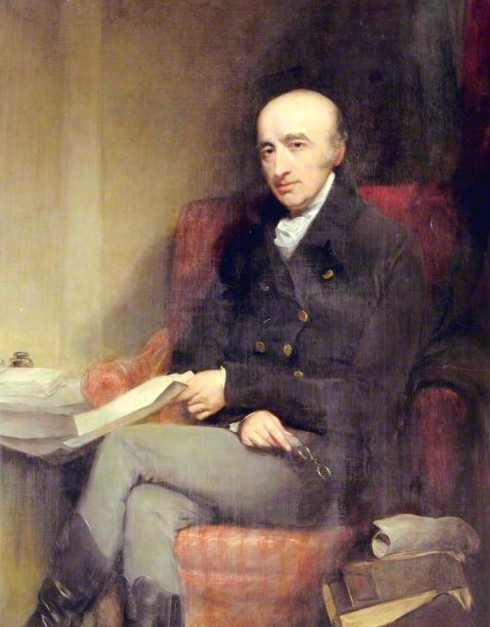Rhodium, with the symbol “Rh” and atomic number 45 in the periodic table, is a chemical element that is considered as one of the rarest on Earth. This element belongs to the noble metal category, which means that it is highly resistant to corrosion, oxidation, and rust. However, despite being corrosion-resistant, rhodium is a brittle metal, and it is more breakable than both silver and gold. Because of its brittleness, rhodium cannot be used to make jewelry regardless of its rarity in the market, although it does have important uses in other industries. To learn more about the rarity and the scarcity of this element, let us take a look at the interesting discovery of rhodium.
Discovery of Rhodium
Rhodium was discovered in 1803 by an English chemist named William Hyde Wollaston, who also discovered a new element called palladium around the same time. In order to produce rhodium, he utilized crude platinum ore that is believed to have been sourced from South America. Then, Wollaston dissolved the platinum ore using aqua regia, a yellowish mixture of nitric acid and hydrochloric acid, and the mixture would be neutralized with sodium hydroxide shortly afterward.
After the acid was neutralized, Wollaston proceeded to the precipitate what’s left of the platinum as ammonium chloroplatinate, which is produced by adding ammonium chloride in the mix. The diluted nitric acid that is applied after the precipitation dissolved all the elements found in the platinum ore except for two, and these two elements are rhodium and palladium. However, aqua regia was able to dissolve palladium, but rhodium still remained intact. Wollaston washed the rhodium using ethanol, and what came out was a rose-red precipitate that reacted with zinc and made rhodium a free metal rather than a noble metal. The rose-red precipitate inspired Wollaston to name the newly discovered element as “rhodium,” which comes from the Greek word “rhodon,” meaning “rose.”
For many years, chemists were unable to find uses or applications for rhodium, as they deemed the element to brittle for a noble metal. However, by the turn of the century, scientists have utilized rhodium as a minor component of thermocouples that are able to measure up to 1800 degrees Celsius in temperature. Since then, rhodium has primarily been used to measure temperature because of their incredible ability to remain stable under extreme conditions.

The first major application for rhodium came in 1976 when the popular car manufacturing company Volvo created the three-way catalytic converter. This converter allows rhodium, as well as other elements, to change the harmful chemical composition of unburned hydrocarbons, such as carbon monoxide and nitrogen oxide, into less noxious gases, making the vehicle equipped with the converter less harmful for humans and the environment. The effectiveness of catalytic converters in the automobile industry enabled 81% of the world rhodium supply to be used to make the machine. About 7% of the supply went into the manufacturing of fiberglass, while the remaining supply is used for chemical research. Besides catalytic converters, rhodium also serves as a component for making headlight reflectors for vehicles, mainly due to its mirror-like surface.
Although it is commonly not used for jewelry, there are some companies that utilized rhodium as a decoration for rings and necklaces, but the rhodium that they use are electroplated on white gold or platinum to make then shinier or brighter. The electroplating of rhodium is typically known in the jewelry industry as rhodium flashing, which is an expensive process for most companies. Because of the relatively high price of rhodium-flashed jewelry, only the elite is able to purchase them, and they are mostly given as a gift. Interestingly, in 1979, the Guinness Book of World Records gifted Paul McCartney with a rhodium-plated vinyl record for being the all-time best-selling recording artist and songwriter.
Another use for rhodium is for increasing the resistance of platinum and palladium against corrosion or oxidation. For electronics, rhodium is utilized as an electrical contact for wires and parts because of its long-life and corrosion-resisting properties. Furthermore, rhodium is also used for mammography systems to get better filters for the x-ray to make images clearer.
In its elemental form, the noble metal rhodium is harmless for humans. However, there are several chemical complexes of rhodium that can be reactive, which means that it can produce chemical effects when it comes into contact with certain elements or chemicals. If it is airborne, people can be exposed to rhodium by inhalation. Because of the potential dangers of inhaling rhodium, the Occupational Safety and Health Administration (OSHA) in the United States set a legal limit for rhodium exposure. According to the agency, the exposure to rhodium should only be 0.1 mg/m3 for every 8 hours in a workday. It is considered dangerous to humans and any living beings if rhodium exposure is more than 100 mg/m3.